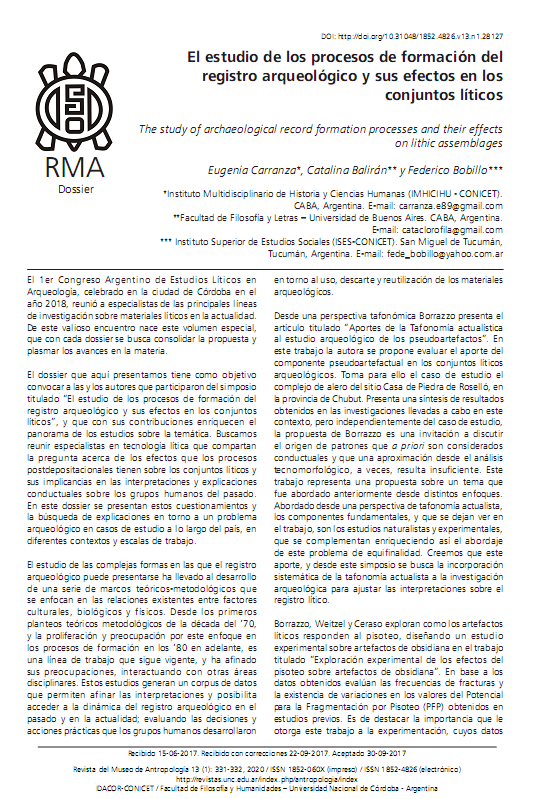The study of archaeological record formation processes and their effects on lithic assemblages
DOI:
https://doi.org/10.31048/1852.4826.v13.n1.28127Keywords:
Lithic studiesAbstract
The dossier that we present here has the objective of convening the authors who participated in the symposium entitled “The study of the processes of formation of the archaeological record and its effects on lithic groups”, and that with their contributions enrich the panorama of the studies on the subject. We seek to bring together lithic technology specialists who share the question about the effects post depositional processes have on lithic assemblages and their implications for behavioural interpretations and explanations of past human groups. In this dossier, these questions and the search for explanations about an archaeological problem are presented in case studies throughout the country, in different contexts and scales of work.
The study of the complex ways in which the archaeological record can be presented has led to the development of a series of theoretical-methodological frameworks that focus on the existing relationships between cultural, biological and physical factors. From the first theoretical methodological proposals of the 1970s, and the proliferation and concern for this approach in the training processes in the 1980s and beyond, it is a line of work that continues, and has refined its concerns, interacting with other disciplinary areas. These studies generate a corpus of data that allows to fine-tune the interpretations and makes it possible to access the dynamics of the archaeological record in the past and at present; evaluating the decisions and practical actions that human groups developed around the use, disposal and reuse of archaeological materials.
Downloads
References
N/D

Downloads
Published
Issue
Section
License
Those authors who have publications with this Journalaccept the following terms:
a. Authors will retain their copyrights and guarantee the journal the right of first publication of their work, which will be simultaneously subject to the Creative Commons Attribution License (Licencia de reconocimiento de Creative Commons) that allows third parties to share the work as long as its author and his first publication in this journal.
b. Authors may adopt other non-exclusive licensing agreements for the distribution of the version of the published work (eg, deposit it in an institutional electronic file or publish it in a monographic volume) provided that the initial publication in this journal is indicated.
c. Authors are allowed and recommended to disseminate their work on the Internet (eg in institutional telematic archives or on their website) before and during the submission process, which can lead to interesting exchanges and increase citations of the published work. (See The Effect of Open Access - El efecto del acceso abierto)











